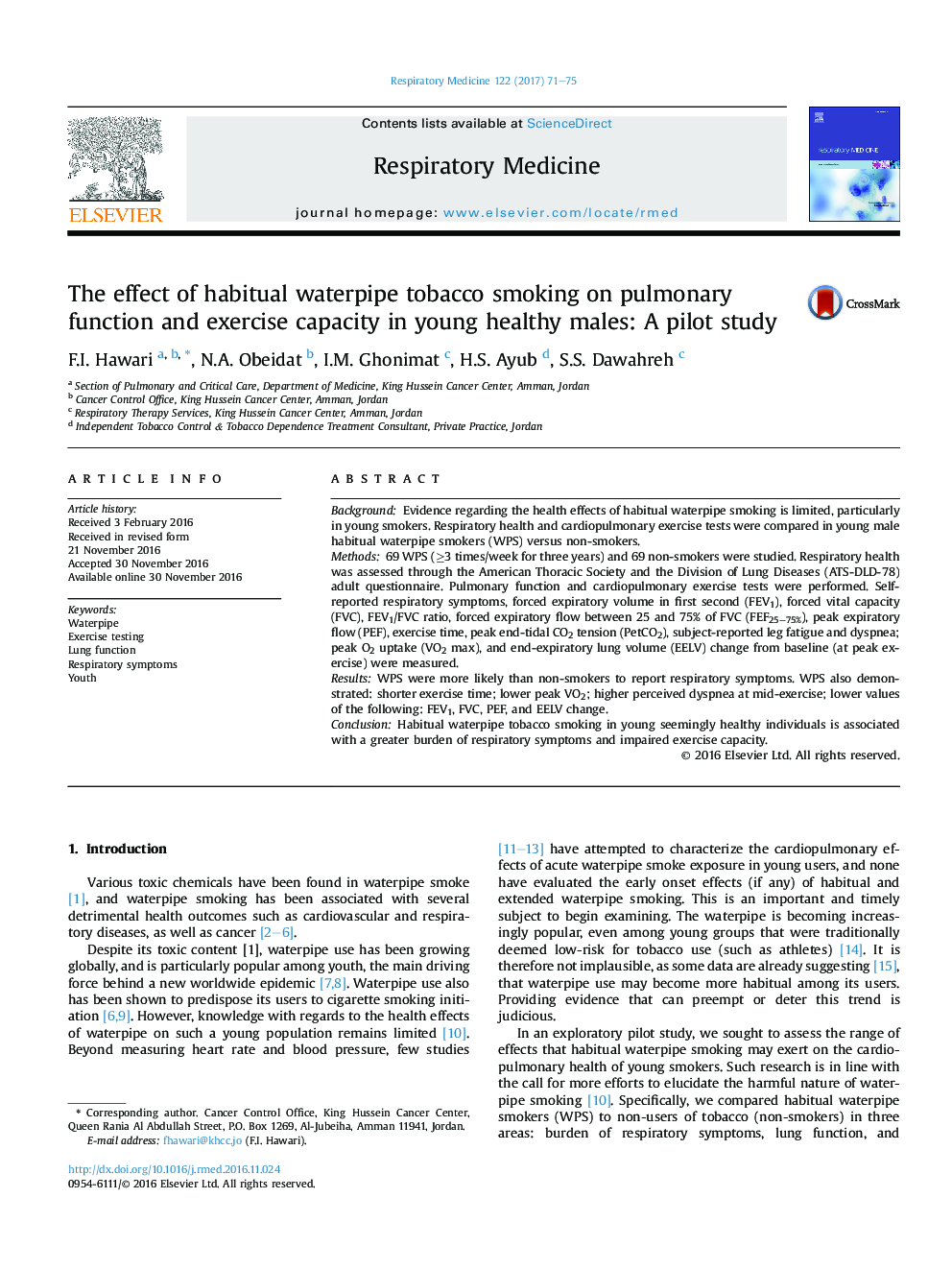| کد مقاله | کد نشریه | سال انتشار | مقاله انگلیسی | نسخه تمام متن |
|---|---|---|---|---|
| 5724909 | 1609444 | 2017 | 5 صفحه PDF | دانلود رایگان |
- Cardiopulmonary effects of habitual waterpipe use in young males are assessed.
- Waterpipe smokers report a greater burden of respiratory symptoms than nonsmokers.
- Waterpipe smokers had shorter exercise time and less breathing efficiency than nonsmokers.
- Results indicate pathophysiological mechanisms at play in young waterpipe users.
BackgroundEvidence regarding the health effects of habitual waterpipe smoking is limited, particularly in young smokers. Respiratory health and cardiopulmonary exercise tests were compared in young male habitual waterpipe smokers (WPS) versus non-smokers.Methods69 WPS (â¥3 times/week for three years) and 69 non-smokers were studied. Respiratory health was assessed through the American Thoracic Society and the Division of Lung Diseases (ATS-DLD-78) adult questionnaire. Pulmonary function and cardiopulmonary exercise tests were performed. Self-reported respiratory symptoms, forced expiratory volume in first second (FEV1), forced vital capacity (FVC), FEV1/FVC ratio, forced expiratory flow between 25 and 75% of FVC (FEF25-75%), peak expiratory flow (PEF), exercise time, peak end-tidal CO2 tension (PetCO2), subject-reported leg fatigue and dyspnea; peak O2 uptake (VO2 max), and end-expiratory lung volume (EELV) change from baseline (at peak exercise) were measured.ResultsWPS were more likely than non-smokers to report respiratory symptoms. WPS also demonstrated: shorter exercise time; lower peak VO2; higher perceived dyspnea at mid-exercise; lower values of the following: FEV1, FVC, PEF, and EELV change.ConclusionHabitual waterpipe tobacco smoking in young seemingly healthy individuals is associated with a greater burden of respiratory symptoms and impaired exercise capacity.
Journal: Respiratory Medicine - Volume 122, January 2017, Pages 71-75
